Making math real-world relevant
 Would you tell the school board how to redesign your school? Students at Shelburne Community School, in Shelburne VT, did just that.
Would you tell the school board how to redesign your school? Students at Shelburne Community School, in Shelburne VT, did just that.
They were tasked with redesigning the school’s outdated “kiva” space. Using Google Sketch-Up, they created three different designs for renovating the space, and presented those designs to a panel of local architects, and their school board.

The problem: an out-dated school space
The kiva space at Shelburne Community School was in desperate need of a redesign. Because it had no doors, sound traveled in from the surrounding hallways. It didn’t get much natural light. The shelving was a mess, and worst of all, it was inaccessible to visitors in wheelchairs. Everyone agreed: something had to change.
School administrator Allan Miller tasked the 7th graders to come up with a solution, and just like that, the students turned their attention to architecture. With the support and guidance of educators Maggie O’Toole and Diana Rich, the students worked in groups to learn Google Sketch-Up. This tool allowed them to create actual scale models of what the kiva space could look like.
The students also learned about measuring spaces, constructing models, collecting feedback from their community and presentation skills. Their proposals for the redesign would undergo some stringent reviews.
The feedback: experts in the field weighed in
The student architects had the opportunity to present their designs to the school community and a panel of local architects for feedback. They presented nine preliminary designs to architects from Bread Loaf Construction, in Middlebury VT, and from Dore and Whittier, in Burlington VT. The two firms had previously redesigned Shelburne Community School’s learning commons space.
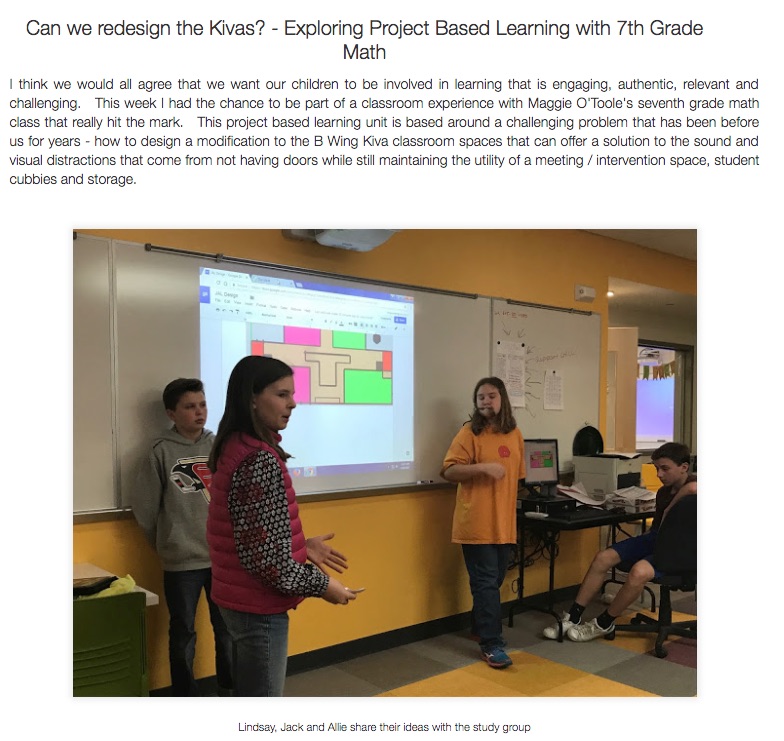
Joining the architects were some of the educators and students at Shelburne who provided the feedback that kicked off the redesign process.
Taking action: presenting to the school board
Taking on board that feedback, the students narrowed down their proposals to three designs. And they contacted the local school board and arranged to have a slot on the next board meeting agenda. At that meeting, they presented an overview of the topic to the full board (and assembled community members), then broke into three groups. Each group presented one design to a portion of the board, fielding questions from board members as they went.
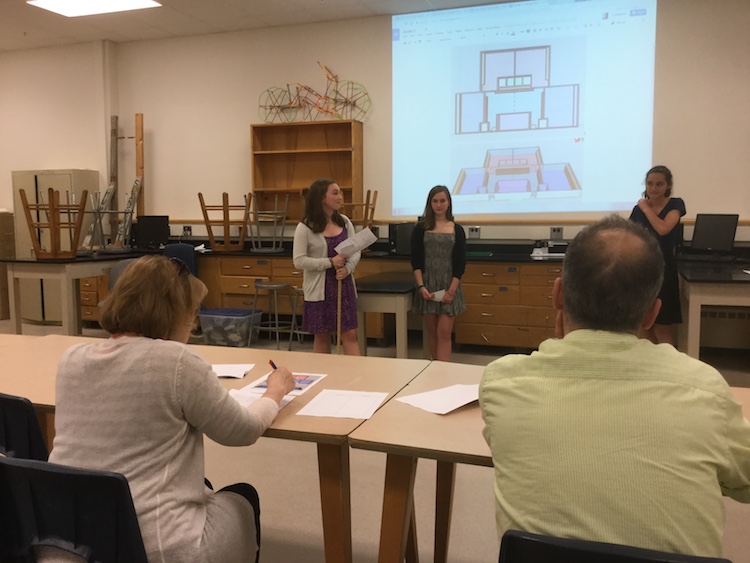
At the conclusion of their school board presentations, students were presented with 3D-printed models of their proposed designs, bringing their ideas one step closer to reality.
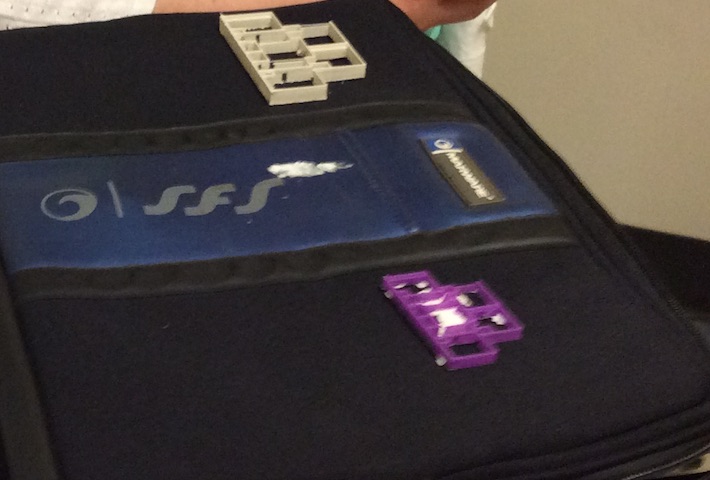
And finally, the takeaways:
This project-based learning unit gave students a real-world issue to tackle. And that’s an important element to bring to project-based learning. As one student commented, after presenting to the school board,
“I thought it was really satisfying to be able to work, kind of like, ‘alongside’ an adult. To just be able to more collaborate with them than have them be in control of us. I thought that was really nice.”
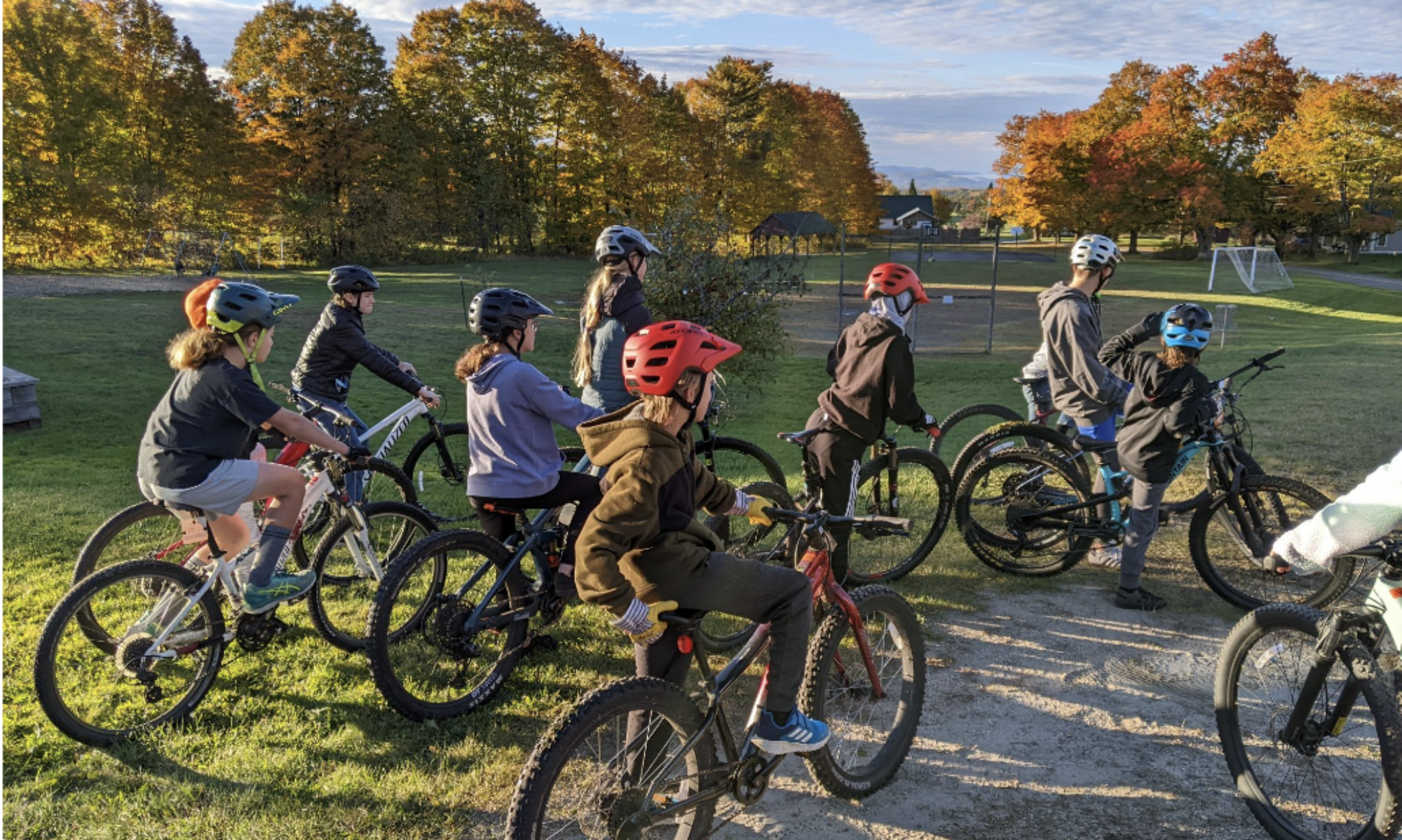

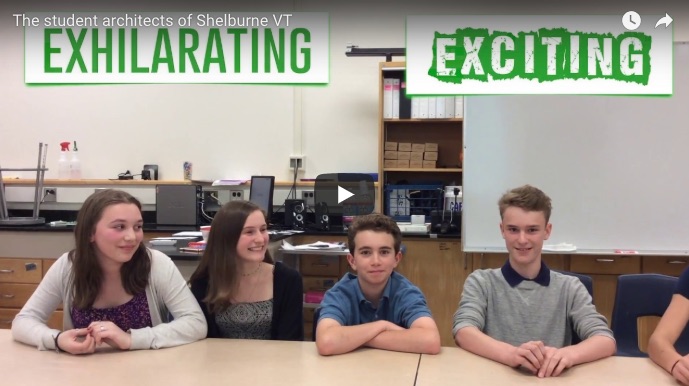
One Reply to “The student architects of Shelburne VT”
Comments are closed.